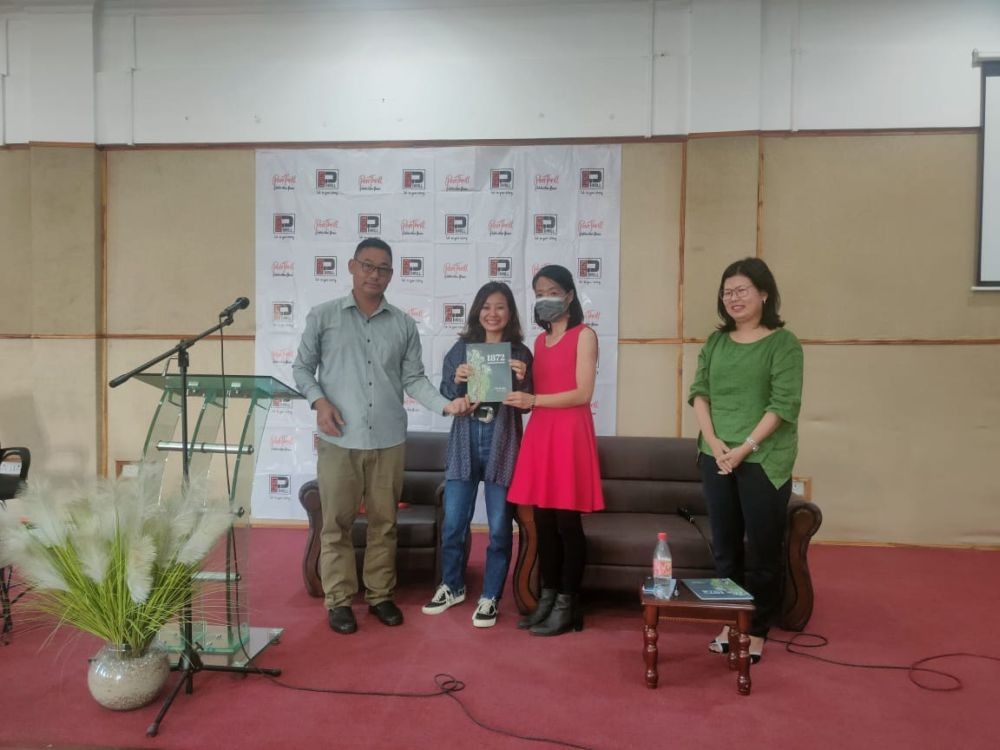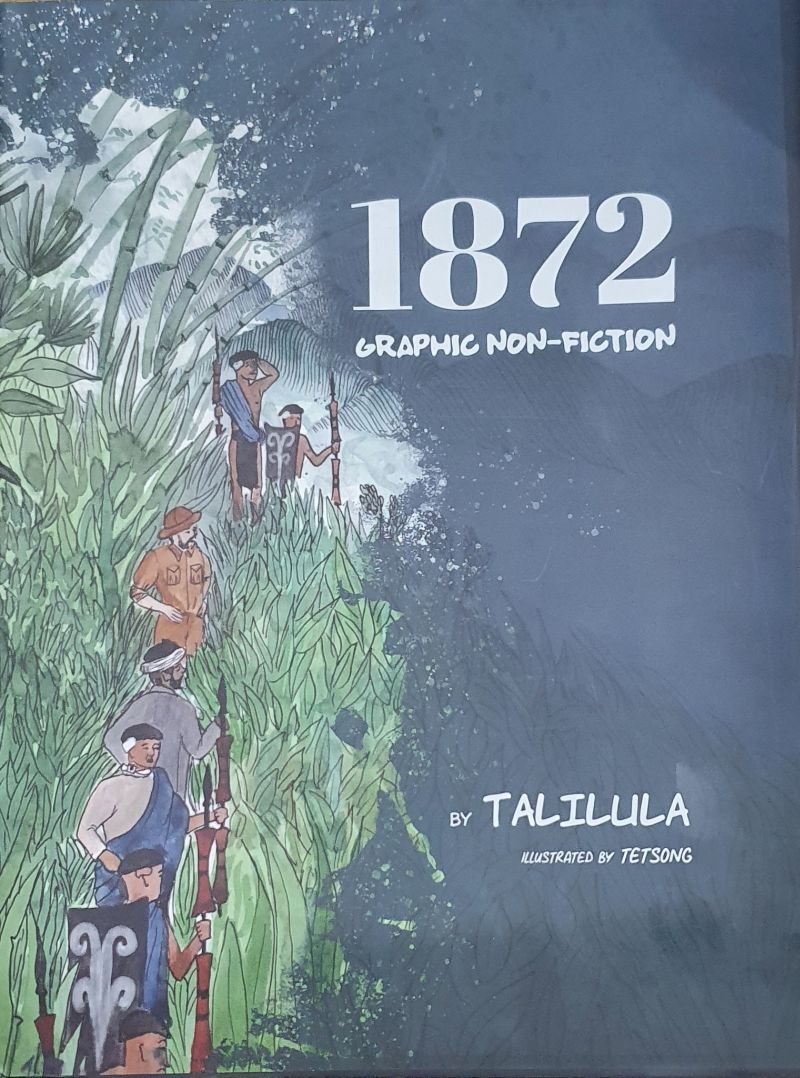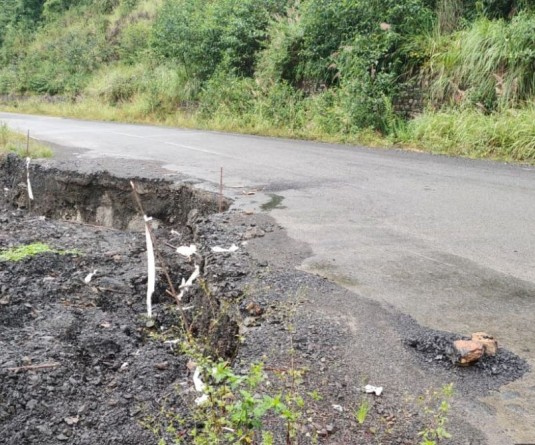Writer and researcher Talilula released a new book ‘1872’: a graphic non-fiction in Dimapur on December 12.

PenThrill releases first graphic non-fiction
Morung Express News
Dimapur | December 12
Writer, researcher and educator, Talilula has released a new book ‘1872’: a graphic non-fiction that centers the voice of the local and the indigenous while telling the story of Christianity’s insertion into the Naga Hills.
Published by PenThrill, ‘1872’ is also the first graphic non-fiction by a Naga author to be published from Nagaland, according to publisher Vishü Rita Krocha. The book, illustrated by Tetsong, a Nagaland-based artist recounts the stories of the first Christian converts from Molungkimong village in the year 1872.
Speaking at the launch event at DABA Zuin Ki, Dimapur on Monday, Rita placed on record that the book is a significant milestone for PenThrill, not only because it is a first-of-its-kind for the publishing house, but also because it is a great contribution to Naga literature. It will sow the seed for many more creative pursuits of storytelling, she said.
Talilula and Tetsong have painstakingly and brilliantly captured the story of the advent of Christianity in Nagaland, Rita said, while adding that the 1872 is a ‘must-have’ for every Naga household. She also informed that there has been an overwhelming response to the book, not just in the state but also other parts of the country.
This is a great start for the first graphic non-fiction from Nagaland, she added.
Releasing the book, Dr Panger Kechu, Dean of Post Graduate Studies & Professor of Society, Christian Ethics & Contextual Theology, OTS, termed it as a ‘remarkable stepping stone,’ for the society.

According to him, the author has allowed everyone to appreciate the maxim, ‘You don't have anything if you don't have the stories,’ which is attributed to Native American writer Leslie Marmon Silko.
In the context of indigenous storytelling in the modern society, Dr Kechu said that “‘1872’ serves as a good model for us Nagas and it is our hope that you would continue doing more work along this line.”
Though unfamiliar with the graphic narratives and its nuances, he appreciated how the author and the illustrator have centered the voice of the local and the indigenous. ‘The agency, the voice of the native becomes so clear, it comes to life, and I think this is what makes your work very different from the current literature that we see,’ he added.
Dr Kechu noted that the book presents an opportunity for careful self definition. “We are able to tell our own, construct and weave our own narrative and that is where 1872 becomes very meaningful.”
He noted that indigenous form of storytelling is usually pluriverse and multivariant, in the sense that it allows for a lot of contestation and contradiction. But in this case, he opined that the story is told in a way that ‘we can all go along together without much conflict.’
“What we need today is to actually revive and regain our indigenous modes of storytelling rather than the modern forms of parochial, patronising and homogenous storytelling that is dividing Nagas,” he said while encouraging the author to pursue more of what has been done today, as she takes up research agendas in the future.
Elaborating why she chose to write ‘1872,’ author Talilula said that the advent of Christianity in the Naga Hills is an oft-repeated story, but we are “looking at it through the lens of white missionaries.”
According to her, because Nagas are located in a context of colonisation, the interest is generally focused on Rev Dr Edward Winter Clark or Mary Mead, and the stories about Süpongmeren Tzüdir, the tatars of Molungkimong, and others who are very integral people in the story, are often ignored.
While there are stories and information about the early Naga Christians, it is more in the oral form or in small pamphlets, and this book is an attempt to tell those little stories that are missing from the mainstream narratives, she added.
Telling this story, and illustrating it has however not been an easy task.
In terms of research and the amount of creative freedom or limitations during the process, Talilula said that the intention was to maintain a form of realism, not just in text but also the visuals.
“When we started the script and the illustration, I was very clear that I did not want cute looking characters or popular anime style illustrations,” she said.
While creating the characters of Clark and Mead, there were more texts and images, so the process was quite simple. However, drawing the characters of Godhula Brown and Sübongmeren, for example, were much tougher. “We just had two images that were very grainy and could not be enhanced digitally,” she said.
Similarly, for the 60 warriors who escorted Clark and Mead from Sibsagar to Molungkimong, as well as the 15 villagers who were baptised, “there were no images but we tried to insert as much information as we could,” she added.
The author also pointed out that the colorisation of clothing was also done keeping in context that the traditional clothing that were worn during those days were daily wear and worn-out. Another detail she highlighted was the Tsüngkotepsü shawl which was worn by only a few people who had completed a certain amount of sacrifices or rituals because it was considered scared. Accordingly, only a few of the characters, like the tatars are seen wearing the shawl, she said.
Notably, the book also features two Ao Naga hymns that were composed by Godhula, Sübongmeren, tradition bearers of Molungkimong and Clark in 1871.
In closing, Talilula noted that there is no specific target audience for the graphic non-fiction: ‘It is a new way of old stories, and this one looks into a small part of the advent of Christianity, and a start towards more conversations on the same.’





